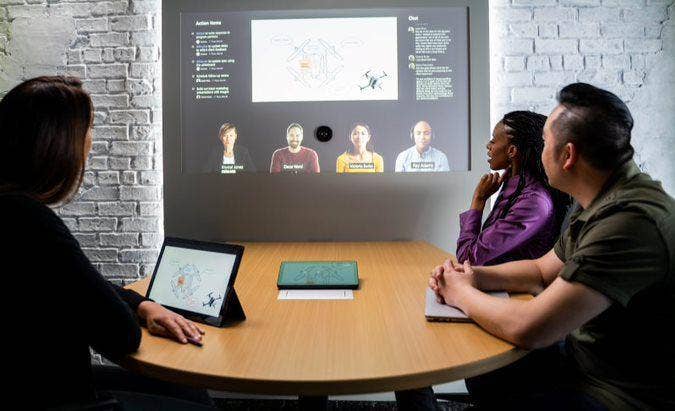Men And Women View Hybrid Work Differently: Why Getting ‘On The Same Page’ Is Critical
57 percent of women say they have had to make more sacrifices than their partners over the last year. But 81 percent of men surveyed feel the current work environment has improved for women, according to recent research from The Channel Company.

The hybrid work environment has given some women enough flexibility to stay in their careers, but there‘s still a big divide in perception between men and women on just how helpful a hybrid work setup has been for female employees over the last year.
Ninety-three percent of women feel the hybrid work environment has either had no impact or has positively impacted their career, according to a recent survey by The Channel Company of 260 men and women in the channel. Only 48 percent of their male counterparts, however, felt the same, responding that hybrid work has had no or a positive impact on their own careers over the last year.
At the same time, 57 percent of women said they have had to make more sacrifices than their partners over the last year and as a result of the COVID-19 pandemic. All the while, the majority of men surveyed – 81 percent -- feel the current work environment has improved for women.
“We are not on the same page,” said Lisa MacKenzie, founding partner of The Channel Company, to an audience of more than 400 people in attendance at The Channel Company’s Women Of The Channel West 2022 event.
Throughout the presentation, MacKenzie polled the audience through Slido, a real-time interactive website and application that conducts live polls to get immediate feedback on certain topics. Through a Slido poll, 89 percent of the 161 respondents answered “yes” to the question whether they believe women are at a disadvantage in the tech industry.
[Related: Diversity In The Channel: No Longer Just A Compliance Play]
The pandemic played on a strength that women inherently have, said Tracy Diziere, president and CEO of TDZ Creative Partners in attendance at WOTC West 2022. “Women are natural-born multitaskers and men more often compartmentalize. [Men] open the drawer and then they close the drawer. They have that one thought. With everything going on, I think women are a lot more in their element.”
Still, hybrid work hasn’t been a solution for every employee. Fifty percent of both men and women surveyed said knew someone that left the tech industry in the last year.
That’s because the tech industry, like nearly every other industry, is feeling the effects of changes the pandemic brought to work environments around the globe. Many women were taking on new responsibilities at home, including caring for elderly family members or helping children that were learning from home at a time when the illusive work-life balance was increasingly hard to achieve. These women also work from home – successfully or unsuccessfully – at the same time.
Even as offices reopen and many employees return to the campus, it’s clear that a mix of both in-office and working from home will be the reality for millions of employees for the foreseeable future.
“This [survey] data is not to be like: ‘Bad them, yay us,’ MacKenzie said. “What this is meant to do is set the stage for where we are personally, professionally, what motivates us, and what we think women need to be motivated versus how men think we’re doing.”
If men and women’s perceptions aren’t aligned, it’s very hard to have conversations about change, she said.
“Obviously, there’s a huge discrepancy between what men are saying and what the women are saying,” Diziere told CRN. “The biggest question is what’s the work that we have to do to be able to bridge that gap?”
Hayley Marshall, director of sales at Pax8, a Denver-based distributor, said her biggest takeaway from the survey was that men think women think differently “about the things that are happening within companies, their ability to have growth in the company and the support that they have.”
“If a man is in leadership and he’s setting certain things within the company, he may not realize the way women feel because their perception is different than a women’s perception,” she said. “They may not be supporting women in the way women really need to be supported.”
MacKenzie said that for managers trying to affect change, this data can be brought to the company and team members who can brainstorm ideas on how to take charge and implement change.
“Do one step at a time,” she said. “Don’t think about how I get there, think about each next step and how that next step can get you to the next step.”